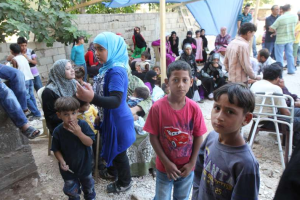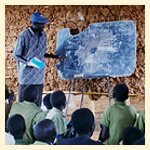The 1951 United Nations Convention Relating to the Status of Refugees is the main international instrument of refugee law. The Convention defines a refugee as:
“[A]ny person who: owing to a well-founded fear of being persecuted for reasons of race, religion, nationality, membership of a particular social group, or political opinion, is outside the country of his nationality, and is unable to or, owing to such fear, is unwilling to avail himself of the protection of that country”.
The lead international agency coordinating refugee protection is the Office of the United Nations High Commissioner for Refugees (UNHCR). In June 2011 the UNHCR estimated the number of displaced people to be 42.5 million of which 15.1 million are refugees. The majority of refugees who leave their country seek asylum in neighboring countries. The “durable solutions” to refugee populations, as defined by UNHCR and governments, are: voluntary repatriation to the country of origin; local integration into the country of asylum; and resettlement to a third country.
People of concern to UNHCR include not only convention refugees, but also other groups such as refugees returning home, stateless people, and asylum seekers. There are approximately 1 million asylum seekers – people who have fled their country and sought sanctuary in another. They apply for asylum – the right to be recognized as a refugee and receive legal protection and material assistance. An asylum seeker must demonstrate that his or her fear of persecution in his or her home country is well-founded. An estimated 27 million people are displaced due to armed conflict within their own countries. Often known as internally displaced persons (IDPs), they have been forced to flee their homes for the same reason as a refugee, but have not crossed an international border. Unlike refugees, IDPs are not protected by international law or eligible to receive many types of aid. As the nature of war has changed in the last few decades, with more and more internal conflicts replacing wars among countries, the number of IDPs has increased significantly. Almost half of the world’s forcibly displaced people are children.
Currently, the UNHCR is providing assistance in 126 countries. Syria, Mali, Sudan, Iraq, Democratic Republic of the Congo, Central African Republic, Chad, Darfur, Colombia, Somalia, Afghanistan, Liberia, and Uganda are among the most pressing refugee situations where UNHCR operates. Many refugee groups have been displaced for extended periods of time. According to the UNHCR “A protracted refugee situation is one in which refugees find themselves in a long-lasting and intractable state of limbo. Their lives may not be at risk, but their basic rights and essential economic, social and psychological needs remain unfulfilled after years in exile.” Canada is working with the UNHCR, the International Organization for Migration and partner countries to resettle groups of refugees who have been living in protracted situations for years or, in some cases, decades. These include the Karen and Karenni ethnic groups in camps along the Thai-Burmese border, and the Bhutanese in Nepal.
For more information see UNHCR Global Trends 2017.
Click on this link to access an interactive map that explores the data for the numbers of refugees, where refugees come from and where they go to.




